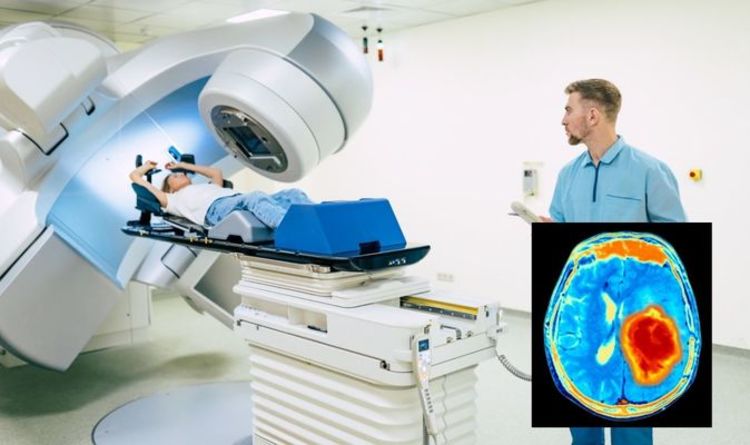How cancer can be treated with radiotherapy
We use your sign-up to provide content in ways you’ve consented to and to improve our understanding of you. This may include adverts from us and 3rd parties based on our understanding. You can unsubscribe at any time. More info
Radiation therapy is a common treatment method for cancers, but can cause damage to ordinary tissues around the tumour.
A second facility has been built in the UK offering proton beam therapy, with the aim of treating 750 patients yearly.
The treatment has been made available by the NHS since 2008, but required international travel that may not have been possible for some cancer patients.
The new facilities should improve the treatment outcomes for complex cancers in the brain and spine, where normal treatments are dangerous.
Traditional radiotherapy uses X-rays, made up of high-energy photons (light particles).
These irradiate the tissues they hit, stopping cells from replicating or killing them outright.
X-rays penetrate through body tissue, meaning that some damage will be done to healthy tissues.
Radiotherapy is often given alongside other cancer treatments, such as chemotherapy and surgery to ensure that as much of the cancer is killed or removed as possible.

Proton beam therapy uses particle accelerators to direct beams of charged protons which have a similar effect to X-rays.
Unlike X-rays, protons lose energy as they travel and stop at a certain distance, making them less likely to travel through the tumour to cause damage to the surrounding tissues.
This is especially important if the tumour is located in a sensitive part of the body, such as near the spinal column or inside the brain or eye.
It also promises better results for children, where conventional radiation therapy can stunt growth and cause long-term damage.
DON’T MISS:
B12 deficiency symptoms: The ‘unexplained’ sign on your foot that can be a ‘red flag'[TIPS]
Statins: High cholesterol medication associated with worse control of blood sugar [STUDY]
How to live longer: The cholesterol-lowering beverage that ‘knocks out’ cancer cells [TIPS]
Alongside the two new facilities that have been built recently, one hospital has offered a specific form of proton therapy since the late 1980s.
Clatterbridge Cancer Centre has used low energy proton therapy for eye cancers for decades.
They boast an extremely high success rate for the treatments, which can sterilise melanomas inside the eye and on the eyelid.

A 2012 poll in the British Medical Journal (BMJ) indicated that 56 percent of readers believed spending on the therapy was going “too far, too fast”.
The accelerators used in the treatment were called the worlds “most costly medical devices” by some.
This shouldn’t be taken to mean that the therapy does not have uses, but organisations such as Cancer Research UK have warned that only one percent of cancer cases would actually benefit from the treatment over conventional X-ray therapy.
A review of studies on Proton Therapy in Clinical and Translational Radiation Oncology noted that research on the efficacy compared to X-rays is limited in many cases.
The researchers found that only 10 percent of studies were randomised, indicating a high risk of bias in how the technology is reported on.

The evidence has been limited for whether proton therapy can help with a broader range of cancers.
In situations where the tumours are not near vital organs, there is limited evidence that proton therapy is the better treatment.
Speaking to Cancer Research UK Professor of Radiation Oncology Gillies McKenna, he said: “At the moment there isn’t any evidence that protons are more or less effective than X-rays at treating cancer.”
The treatment can also be several times more expensive than conventional radiotherapy.
Source: Read Full Article






